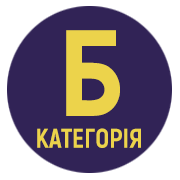GENESIS OF SCIENTIFIC AND TECHNICAL REVOLUTION AND INFORMATION SOCIETY
Abstract
The proposed article provides the analysis of the digital revolution and the information society as a complex and controversial phenomenon of the modern era, which is a global trend of today’s civilization; highlights the conditions of information technology, ways, and directions of its implementation in all spheres of society. The genesis of contemporary art and the relationship between scientific and technological progress and the transformation of art into a cultural space are widely known in the West, and publications on these trends can be found in media arts centers, public libraries, universities, and art academies. In Ukraine, this topic is insufficiently covered and has not been properly developed. Throughout human history, art and science have interacted everywhere and in a multi-vector way. There are areas where art itself influences the technology and production of means of artistic expression, as well as areas where the process of such interaction looks more than natural; among the examples of such interaction are also design, architecture, and others. Since technology and art are constantly evolving, their positive relationship always remains dynamic. Art critics identify several periods in history when the significance of such interaction changed qualitatively: the first information revolution was caused by the emergence of writing, enabled the transmission of information, knowledge from generation to generation through its fixation in signs and destroyed the monopoly of a narrow circle of people on knowledge; the second information revolution was caused by the invention and spread of book printing in the 15th century and expanded access to information for the general public through “knowledge replication”; the third information revolution (late 19th century) is associated with the invention of electricity, which led to the telegraph, telephone, radio, which created the preconditions for the effect of “space compression”; the fourth information revolution (1970s) was caused by the invention of microprocessor technology and the personal computer, culminating in the emergence of the World Wide Web, which enabled information exchange on a global scale.
References
Ужинський М.Ю. (2011). Цифрові технології і засоби мультимедіа: навчальний посібник. Рівне: РДГУ. 236 с.
Хеллер Д. (2004). Мультимедійні презентації у бізнесі. Технології шоу-бізнесу. Київ: BHV. С. 12–16.
Hoffmann F. (2005). Encyclopedia of recorded sound. 2’nd ed. Routledge. 2 v. xii, 1289 p.
Katz B. (2002). Mastering Audio – the art and the science, Focal Press, Boston, USA. 319 p.
Olsen E. (1998). Verna P. The Encyclopedia of Record Producers. New York : Billboard Books. 893 p.
Wolfser L. (2009). Digital Art. H.F. Ullmann Publishing, Deutschland. 276 p.





